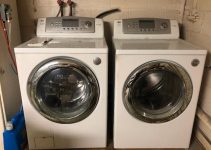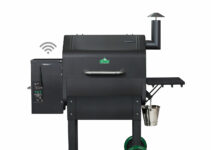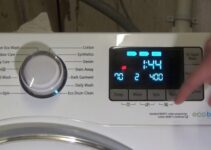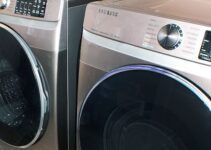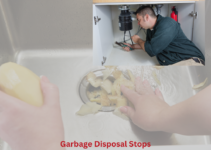Refrigerators are indispensable appliances in our daily lives, ensuring our food stays fresh and safe. They achieve this remarkable feat by using a substance called Freon, a refrigerant that’s crucial for the cooling process. However, there may be occasions when you need to remove this Freon, whether for maintenance, repairs, or proper disposal of your appliance. This task can seem daunting, but with the right tools, protective measures, and meticulous attention, it’s a task you can undertake safely. Let’s get started.
Steps:
- Gather Your Tools
- Safety First: Protective Measures
- Locate the Refrigerant
- Connect the Refrigerant Pump
- Begin the Removal Process
- Dispose of the Refrigerant Properly
Step 1: Gather Your Tools
Before beginning, you’ll need a few essential tools:
Refrigerant Recovery Machine
This is the core tool in the Freon removal process. A refrigerant recovery machine is designed to extract refrigerant or Freon from cooling appliances like refrigerators safely. This device sucks the refrigerant out of the fridge and stores it in a secure container, preventing it from being released into the environment, which can cause harm.
Refrigerant Manifold Gauge
This device is vital for monitoring the pressure levels during the Freon removal process. It’s connected to the refrigerant recovery machine and the refrigerator to ensure the pressure is at the correct level during the process. The gauge typically has color-coded hoses (blue for low pressure, red for high pressure, and yellow for recovery cylinders) to make the process easier to understand and safer to execute.
Refrigerant Recovery Cylinders
Once the refrigerant is extracted from your refrigerator, it needs a safe place to be stored. That’s where refrigerant recovery cylinders come in. These cylinders are designed to hold the removed refrigerant safely and prevent it from being released into the atmosphere. They’re built to withstand high pressure, ensuring safety during and after the process.
Safety Equipment
Safety should always be your first priority when dealing with substances like Freon. Always wear protective gloves and goggles to protect your skin and eyes from potential exposure. Additionally, working in a well-ventilated area is crucial to prevent the buildup of harmful fumes.
Having these tools at your disposal ensures a smooth, efficient process while minimizing potential risks.
Read More: How To Clean Your Refrigerator Water Line
Step 2: Safety First – Protective Measures
Removing Freon can be dangerous if not done properly. Always wear protective goggles and gloves during the process to protect your eyes and skin from potential exposure. Work in a well-ventilated area to prevent the buildup of harmful fumes.
Step 3: Locate the Refrigerant
The refrigerant is typically located in the compressor of your refrigerator, which is at the back of the appliance. You’ll find two ports: a low-side port and a high-side port. The low-side port is where you’ll attach your refrigerant recovery machine.
Step 4: Connect the Refrigerant Pump
Connect the refrigerant recovery machine to the low-side port using your manifold gauge. Ensure the connection is secure before proceeding to the next step.
Step 5: Begin the Removal Process
Turn on the refrigerant recovery machine. It will begin extracting the Freon from the refrigerator and storing it in the recovery cylinder. Monitor the pressure gauge closely. Once it reads zero, all the Freon has been removed.
Read More: Why Your Refrigerator Making a Knocking Noise
Step 6: Dispose of the Refrigerant Properly
Proper disposal of the refrigerant is crucial to protect the environment. Do not release it into the atmosphere. Instead, take it to a certified disposal facility where it can be recycled or disposed of following local regulations. Check the EPA’s guidelines on refrigerant disposal for more information.
Safely removing Freon from your refrigerator is a meticulous process, but one that’s crucial for both safety and environmental protection. By following these steps, you can ensure you’re performing this task in the most responsible manner.
Remember, if you’re ever unsure or uncomfortable handling Freon, it’s best to contact us to consult with a professional.
Additional Considerations
When removing Freon from your refrigerator, it’s crucial to have a comprehensive understanding of why it’s necessary and what it implies for your refrigerator’s functionality:
Why remove Freon?
Freon, or refrigerant, is essential for your refrigerator to function. However, over time, leaks can occur, or the refrigerator may not cool efficiently, indicating a need to remove and replace the refrigerant. In other cases, if you’re looking to dispose of an old refrigerator, it’s essential to remove the Freon safely and responsibly before doing so, as releasing Freon into the environment is both illegal and harmful.
After the Freon removal
Once the Freon is removed, your refrigerator will no longer cool until new refrigerant is added. It’s essential to have a plan for either properly disposing of your appliance or refilling the refrigerant if you’re looking to continue using the fridge.
To Summarize
Extracting Freon from your refrigerator might not be an everyday task, but it’s an essential skill for those keen on understanding their appliances better and taking active steps towards safer, more sustainable living. Always remember to prioritize safety and adhere to local regulations, ensuring that the refrigerant is disposed of responsibly. Your actions today can make a significant impact on our environment tomorrow.
Need help? Let us know and contact us
